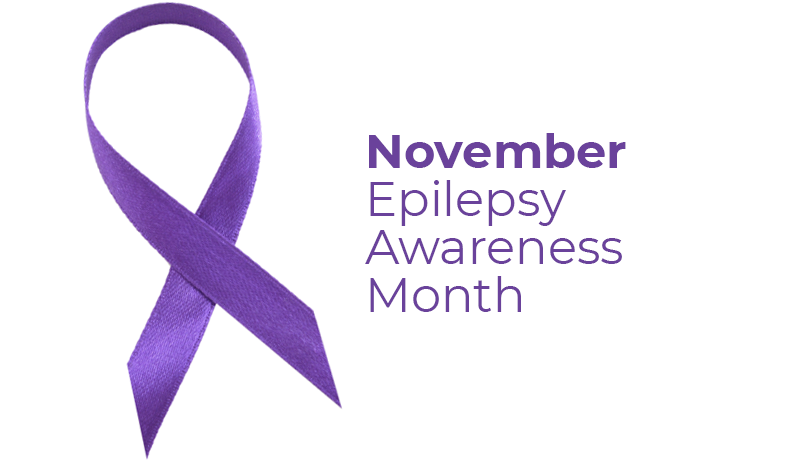 Dr. Arno Fried, founder of Advanced Neurosurgery Associates (ANA), was profiled for Epilepsy Awareness Month, which is celebrated in November. Dr. Fried, who has performed over 500 epilepsy surgeries, sheds some light on the condition and its treatment. He discusses aspects of epilepsy below.
Dr. Arno Fried, founder of Advanced Neurosurgery Associates (ANA), was profiled for Epilepsy Awareness Month, which is celebrated in November. Dr. Fried, who has performed over 500 epilepsy surgeries, sheds some light on the condition and its treatment. He discusses aspects of epilepsy below.
FAQs About Epilepsy
An estimated 3.4 million Americans, including some 470,000 children, and 50 million people worldwide currently live with epilepsy. Each year some 150,000 people are diagnosed with the condition, which affects the nervous system.
Pediatric epilepsy is one of the most common neurological problems in children.
What is epilepsy and what causes it?
The word epilepsy derives from the Greek word epi meaning “upon, at, close upon”, and the Greek word Leptos meaning “seizure”.
Epilepsy is a chronic disorder in which people tend to have recurrent seizures (fits). Seizures are caused by a sudden surge, technically an overload, in the brain’s electrical activity. This causes a temporary disturbance in the messaging systems between brain cells. Every bodily function occurs by messaging systems in our brain. What an epilepsy patient experiences during seizures depends on which part of the brain the seizure activity emanates from and how quickly it spreads to other areas.
Various conditions can cause epilepsy. These include brain tumors, head injuries, infections, stroke or genetic conditions. However, in up to 70 percent of epilepsy cases for both adults and children, no cause can be determined.
What are the types of epileptic seizures?
Epilepsy symptoms vary from person to person. Some may have simple staring spells while others have violent shaking and loss of alertness. The type of seizure depends on the part of the brain affected as well as the cause of the epilepsy.
An absence (petit mal) seizure most commonly resembles a staring spell. It is often referred to as an absence seizure because it distributes brain activity in a way that leads to the “absence” of behavior.
A generalized tonic-clonic seizure is a seizure that involves the entire body. The terms seizure, convulsion, or epilepsy are most often associated with generalized tonic-clonic seizures.
Partial (focal) seizures occur when the electrical activity remains in a limited area of the brain. Partial seizures can be simple (not affecting awareness or memory) or complex (affecting behavior and awareness of events before, during and immediately after the seizure).
Who would benefit from epilepsy surgery and what does it entail?
Epilepsy is first treated with anticonvulsive drugs, also called antiepileptic drugs. To be considered for epilepsy surgery, a patient must have tried at least a combination of two or more of these anti-seizure drugs without success. These medically resistant patients (who make up 30 percent of the epilepsy population) are candidates for surgical evaluation.
Epilepsy surgery works best for people who have seizures that always originate in the same place of their brains. Surgery is performed to remove an area of the brain from which seizures originate. Surgery is considered only if the area of the brain, called the seizure focus, can be clearly identified, and its removal does not jeopardize any critical functions, such as movement or language. Extensive testing is conducted prior to any consideration of surgery in order to determine if that surgery is appropriate.
What percentage of success have you had with epilepsy surgery?
It’s not a simple percentage, since “success” can mean various outcomes. It depends on the origin of the problem and which type of relevant surgical procedure a patient undergoes. In up to 80 percent of the time, our surgical patients get relief from at least some type of severe or dangerous seizures. In general, most patients end up either partially seizure free, or in some cases, entirely seizure free.
What are the common concerns of your patients?
They may have a fear of surgery not helping them or they fear the actual procedure. Some people have “hospital phobias” no matter what the procedure. In my practice, we have vast experience and a strong working relationship with epilepsy teams at our various hospitals.
Our goal is to always ensure that patients have a safe and successful experience with this surgery, which includes a caring and compassionate approach. To that end, the surgeons in my practice participate in (and in some cases direct) Level 4 Epilepsy Centers, the highest possible designation made by the National Association of Epilepsy Centers (NAEC), which is comprised of a select number of epilepsy centers in the U.S.
What is the age range for the surgery you’ve performed, and can you address the “sooner the better” issue?
We have no age limit. We’ve done epilepsy surgery on babies less than a year of age (the evaluation period takes some time, so they aren’t literally newborn), to those in their late 70s. We had an 80-year-old patient who had seizures caused by a meningioma (usually benign brain tumor), which is fairly typical. In this case, once the tumor is removed, the seizures are pretty well under control.
Uncontrolled seizures carry various risks. Since studies have shown that the earlier surgery is performed, the better the outcome, surgeries are now being considered sooner. In addition, medications are not without side effects. This is especially true for young people whose growth and development can be impacted by these medications.
There is also a phenomenon called the kindling model, which has shown that the duration and behavioral result of induced seizures increases after seizures are induced repeatedly. In other words, seizures can possibly provoke more seizures.
In any event, those with difficult to control or intractable epileptic seizures should be evaluated by an epileptic center, which can best provide treatment to control seizures, whether or not it is with surgery.
How would you characterize the meaning of successful epilepsy surgery for your patients?
In my field, success ranges from having a greater than 50 percent reduction in seizures all the way up to being seizure free. A partial success can be significant. An example might be that surgery eliminates atonic seizures (aka drop seizures). These alterations of brain function cause a brief lapse in muscle tone, which are very dangerous as a patient can subsequently fall and experience a head injury.
What are the next steps for people with epilepsy to explore to determine if they are candidates for surgery?
Patients can contact a neurosurgeon or seek a referral to an epileptologist, a neurologist who specializes in the treatment of epilepsy. Sometimes a patient comes to our practice as a self-referral or from a referring physician.
A good place to start is the directory of epilepsy experts and epilepsy centers provided by the National Association of Epilepsy Centers (NAEC).
This comprehensive question and answer article appeared in the Courier News on Tuesday, 24 November 2015, and can be found online at mycentraljersey.com.

ANA is a team of expert neurosurgeons and medical professionals, who combine their decades of knowledge to provide information, events, and articles on a range of neurological conditions.



